- Home
- Deborah Harkness
The World of All Souls Page 38
The World of All Souls Read online
Page 38
Mary Sidney created an arbor Dianae in her laboratory from traditional materials. Later she created another, to which she added some of Diana’s blood, resulting in a crystalline tree that resembled a gnarled oak. When Matthew added his own blood to that same experiment, the gnarled “oak” grew gold leaves and tiny red fruits. This chemical reaction paralleled what Matthew and Diana had discovered: that together they were able to flourish and even create new life. Back in Madison, New York, the magical blasted tree that grew in the keeping room of the Bishop house derived from a similar blending of the melted remains of Matthew’s ampulla from Bethany (which would have contained traces of mercury along with the silver) and drops of blood shed by Matthew and Diana.
The Green Lion
Diana’s research at the Bodleian included reading the work of the English alchemist George Ripley, who described making the “green lion,” a step in the process of creating the philosopher’s stone. Later, when Diana visited Mary Sidney in her laboratory, she had the opportunity to put her historical research into practice when she and Mary “hunted the green lion” together. This meant, as Diana explained to Matthew, that they combined two acid solutions with the aim of witnessing “colorful transformations.” Unfortunately, their experiment was cut short when the vessel exploded.
The green lion was the alchemists’ term for what happened when strong, green acids like sulfuric acid or nitric acid were combined with others, such as hydrochloric acid, and then applied to matter. Alchemists noted that this solution had a tendency to dissolve whatever was placed within it—vegetative or mineral—and sometimes, as Diana discovered, the entire experiment exploded from the chemical reactions. For many alchemists the green lion reminded them of the animating energy and growth of green plants. For these early scientists and philosophers, the green lion appeared to devour whatever was placed within it, representing a kind of natural energy much like the energy that enlivened the vegetable world.
The Chemical Wedding
As we have seen, alchemy was not simply the attempt to turn base metal into gold, but a mystical process based on the belief that the combination of opposing substances would result in a greater, third substance. The transmutation of base metals into gold was only the concrete representation of the spiritual goal of perfecting the unenlightened spirit.
One of the most important alchemical processes was the combination of sulfur and mercury (quicksilver). Sulfur was believed to be a masculine material, because it is volatile and fiery. Mercury, fixed and passive, was believed to be feminine. In keeping with Renaissance ideas about men and women, alchemists envisioned the masculine substance acting on the feminine substance to give it shape.
In the allegorical language of alchemy, sulfur was represented by a Red King and mercury by a White Queen. Continuing the language of opposites, the Red King was associated with the sun and the White Queen with the moon. When these two came together in a chemical wedding, they formed a whole new substance. The Ripley scroll describes this union in poetry: “Now when this Marriage is done / Philosophers call this a stone / The which hath great Nature / To bring a stone yt is so pure.”
The first missing page from Ashmole 782, which the Bishop house released to Diana and Matthew after their retreat to Madison, was a beautiful illumination of the alchemical wedding. A golden-haired woman in a white gown represents quicksilver, the principle of volatility in alchemy. She is offering a white rose, a symbol of purity, to her pale, dark-haired husband. He is dressed in black-and-red robes and holds a red rose, a token of love and death. Not only do the figures physically resemble Diana and Matthew, but the bride is also wearing Matthew’s crest, a crescent moon with star, on her head—just as Diana now wore Matthew’s crest on her back, burned into her by the witch Satu. The whole scene is gathered within the outspread wings of a phoenix, symbol of rebirth.
Diana realized that this page echoed illuminations of the male and female alchemical principles that she had seen in Matthew’s copy of the Aurora Consurgens. There the golden Sun King and silvery Moon Queen were even more closely identified with Matthew and Diana. Like a vampire, the king lies within a heavy stone sarcophagus. “She will roll away the stone from the entrance of my tomb and give me the wings of a dove so that I might fly with her to the heavens to live forever and be at rest.” The queen, a terrifying figure with silvery snakes instead of hair, entreats her lover, “Do not refuse me because I am dark and shadowed.” When Matthew and Diana’s children were born, the improbable offspring of a vampire and a witch, Diana recognized that these Bright Born children were the offspring of her own chemical wedding—and that they might be the answer to the continued existence of all creatures.
This image of Luna and Sol from Splendor Solis was the starting point for my creation of the image that Diana and Matthew discover—the chemical wedding page of Ashmole 782 that shoots out of the paneling of the house in Madison. The style of illustration is similar to what I see on the missing pages of Ashmole 782, although the details in the image are obviously different—and no, these figures don’t look like Matthew or Diana!
He found the picture of the Sun King and the Moon Queen jousting on the back of a lion and a griffin, and he smiled broadly. “Yes, this will do.”
This is the image from the Aurora Consurgens next to which Philippe de Clermont leaves one of his notes for Ysabeau.
See also: LITERATURE: Aurora Consurgens
The Philosopher’s Stone
The pursuit of the philosopher’s stone began with the attempts of ancient civilizations to impose an order on their world. In the eighth century, the alchemist Jabir ibn Hayyan (Latinized as Geber) looked to Aristotle’s physics of the four elements with their combination of four basic qualities—hotness, coldness, dryness, and wetness—and applied it to alchemy. He believed that if these basic qualities were rearranged, one type of metal could be transmuted into another. This transformation required a catalyst, which in European alchemy became known as the philosopher’s stone.
On a physical level, alchemists hoped to use the philosopher’s stone to turn base metal into gold or silver. At a higher level, the alchemical process represented a spiritual evolution from a state of imperfection to a state of perfection. Thus the philosopher’s stone was also supposed to be an elixir of life, able to cure illness or even confer immortality on its possessor.
Diana Bishop is a scholar of seventeenth-century chemistry because, despite these apparently futile attempts to transmute base metals into gold or silver, the work of alchemists provided the basis for modern scientific experimentation. When her Aunt Sarah dismissed alchemy, Diana countered hotly that the whole point of her work was to show how scientific the pursuit of alchemy actually was. Her discovery of Ashmole 782, however, forced Diana to admit that alchemy was more than the foundation of modern science—and that she personally was linked to the process.
The philosopher’s stone represents different things to different characters in the trilogy, depending on their personalities. To the practical Hamish, it’s just a legend. To Matthew it embodies what it means to be a vampire—rich, learned, and almost immortal—and he believes that Ashmole 782 may be its physical representation. To the avaricious wizard Peter Knox, it holds the promise of eternal life (and therefore eternal power). But it is Diana, initially a skeptic, who discovers the truth. As she uncovers the connections between the alchemical illustrations in Matthew’s Aurora Consurgens, Ashmole 782, and her own relationship with Matthew, she realizes that they are both involved in the transformative process of alchemy. A witch and a vampire come together and, contrary to everything they had believed possible, produce a third substance: Bright Born children, who possess the most admirable qualities of their parents but are nevertheless something entirely new.
Decorative Arts
Interior Spaces of All Souls
The Old Lodge Parlor
The parlor was neither as cozy as the room where we’d taken
our breakfast nor as imposing as the great hall. The abundance of carved armchairs, rich tapestries, and ornately framed paintings suggested that its primary purpose was to entertain the house’s most important guests. A splendid rendering of St. Jerome and his lion by Holbein hung by the fireplace. It was unfamiliar to me, as was the Holbein portrait next to it of a piggy-eyed Henry VIII holding a book and a pair of spectacles and looking pensively at the viewer, the table before him strewn with precious objects. Henry’s daughter, the first and current Queen Elizabeth, stared at him with hauteur from across the room.
The parlor in a typical, wealthy Tudor house such as the Old Lodge would have been where the family received visitors and entertained, as Diana and Matthew did with the School of Night. With its wood paneling and more formal decor, this room, like the Old Lodge overall, is based on the parlor in Speke Hall, in the north of England.
The Keeping Room, Bishop House
“We’re witches—of course the house is haunted. But it’s more than that. The house is . . . alive. It has its own ideas about visitors, and the more Bishops there are, the worse it acts up. That’s why Em and Sarah left.”
A phosphorescent smudge moved in and out of my peripheral vision. My long-dead grandmother, whom I’d never met, was sitting by the keeping room’s fireplace in an unfamiliar rocking chair.
Colonial houses had separate rooms for meeting guests, dining, cooking, and sitting as a family. The most formal of these rooms was usually the parlor, and the family’s room was often called the keeping room. In the Bishop house, an extension was added to the back of the original house. Sarah’s office is the old parlor, and the keeping room—though once the more casual room—is now used as the formal living room. In a house that has a life of its own as the Bishop residence does, the keeping room is one of many places where unpredictable things can happen. The family’s ghosts congregate there often, and Matthew and Diana returned from the past to find that a tree had erupted from the fireplace.
Mary Sidney’s Laboratory, Baynard Castle
“Have you seen Mary’s laboratory?” I exchanged the shapeless gray coat for my cloak before sending Joan away to tend to her other duties. “She’s taken over one of the castle’s towers and painted the walls with images of the philosopher’s stone. It’s like working inside a Ripley scroll! I’ve seen the Beinecke’s copy at Yale, but it’s only twenty feet long. Mary’s murals are twice as big.”
Mary Sidney commented to Diana that she knew how lucky she was to have her own laboratory and the leisure and money to experiment as she did. The historical records tell us nothing about a laboratory at Baynard’s Castle, but there are sources for Mary’s chemistry lab at Wilton House (the Pembrokes’ country seat), and her interest in alchemy is well documented. Mary’s lab in Shadow of Night contained the more expensive Venetian glass alchemical flasks so that she could clearly see her experiments as they took shape in the container, revealing the arbor Dianae in all its glory. There would also have been all sorts of crucibles and alembics for heating and distilling substances at different temperatures, as well as Mary’s notebook on the side, there for her to carefully record her experiments.
The Forest Room, Clairmont House
Ysabeau pushed open a wide, paneled door with a gleaming brass knob. I gasped. Everything in the room was in shades of green, silver, pale gray, and white. The walls were papered with hand-painted depictions of branches and leaves against a pale gray background. Silver accents gave the effect of moonlight, the mirrored moon in the center of the ceiling’s plasterwork appearing to be the source of the light. A ghostly female face looked down from the mirror with a serene smile. Four depictions of Nyx, the personification of night, anchored the four quadrants of the room’s ceiling, her veil billowing out in a smoky black drapery that was painted so realistically it looked like actual fabric. Silver stars were entangled in the veiling, catching the light from the windows and the mirror’s reflection. “It is extraordinary, I agree,” Ysabeau said, pleased by my reaction. “Matthew wanted to create the effect of being outside in the forest, under a moonlit sky. Once this bedchamber was decorated, he said it was too beautiful to use and moved to the room next door.”
The Forest Room in Clairmont House is on the second floor and is the most stunningly decorated room in the place. Ysabeau believed that Matthew had made it for Diana without realizing it, complete with the Elizabethan bed his future self had shared with her in Tudor London, set into a recess in the wall. Inspiration for this room was taken from a Georgian English bedroom interior, following a Chinese Chippendale style that was popular in mid-eighteenth-century London.
The Art, Fashion, and Jewelry of All Souls
The de Clermonts and Bishops have collected an incredible array of paintings, objects, fashion, and jewelry through the centuries. Phoebe Taylor is in awe of the many priceless pieces stored in their attics or still used in their everyday lives. She has begun to catalog some of the items that are significant to the family. Here you can browse their weird and wonderful collection and find out more about each item’s extraordinary background and its place in the All Souls world.
Paintings
Works by Hans Holbein
Hans Holbein the Younger (c. 1497–1543) was one of the most famous artists of the sixteenth century. Born in Augsburg, in what is now part of Germany, son of painter Hans Holbein the Elder, Holbein then moved to Basel, Switzerland, and worked there as a young artist on religious paintings, murals, and printed books. Slowly he gained international fame through his portraits. He spent many years in England, rising to become king’s painter to Henry VIII in the 1530s. He produced numerous portraits of the royal family as well as of important court figures during that period, capturing his subjects with a stunningly precise and discerning eye. Matthew de Clermont, with an appreciation for only the best in art, owns a number of his paintings, all of which are stored or on display in the Old Lodge.
Henry VIII with Book and Spectacles (c. 1540)
Hans Holbein the Younger
The Old Lodge, Woodstock, England
Background: This Holbein that hung in the sixteenth-century parlor of Matthew’s Old Lodge was unfamiliar to Diana when she saw it, one of many art treasures that Matthew had tucked away throughout his houses. There is no record of Holbein’s ever producing such a portrait. Many of his paintings have been lost; Holbein’s original iconic portrait of Henry VIII, standing in a wide-legged, kingly stance, was destroyed in a fire. In Matthew's Holbein, the depiction of Henry, standing before a table holding precious objects, is more pensive than that well-known image. The book and spectacles perhaps allude to Henry’s image of himself as a scholar and Defender of the Faith. Henry’s title of Defender of the Faith was given to him originally by the pope after he wrote the book Assertio Septem Sacramentorum (Defense of the Seven Sacraments), which countered the ideas of Luther and included, ironically, ideas on the sacrament of marriage. The pope revoked Henry’s title after the king broke with Rome and made himself head of a new Church of England so that he could marry Anne Boleyn.
St. Jerome and His Lion (c. 1534)
Hans Holbein the Younger
The Old Lodge, Woodstock, England
Background: The unfamiliar Holbein that Diana saw hanging alongside the portrait of Henry VIII in the sixteenth-century parlor of the Old Lodge was of St. Jerome. The saint was commonly represented with a lion, alluding to the legend of him pulling a thorn from a lion’s paw. There is no record of Holbein’s having created this painting either, but he did many religious paintings early in his career that are now lost.
Margaret More, Daughter of Sir Thomas More (1535–36)
Hans Holbein the Younger
The Old Lodge, Woodstock, England
Background: Phoebe was horrified to see a Holbein portrait of Margaret More (1505-44) casually hung in a bathroom of the modern-day Old Lodge. As Ysabeau revealed, there were far larger portraits of the
family in the attic. This previously unknown small portrait could have been the inspiration for the well-known miniature that Holbein later painted of Margaret to accompany one of her husband, William Roper. Margaret, a writer and translator, was famed as one of the most scholarly women of her time and was devoted to her father, Thomas More. Margaret’s age marked on the miniature seems to suggest that it was painted just after the execution of her father.

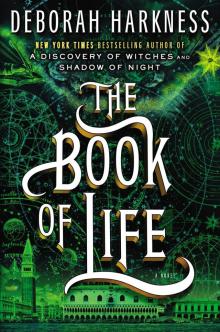 The Book of Life
The Book of Life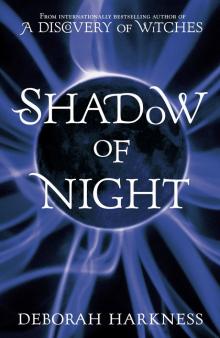 Shadow of Night
Shadow of Night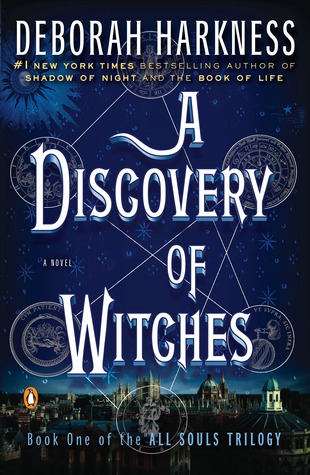 A Discovery of Witches
A Discovery of Witches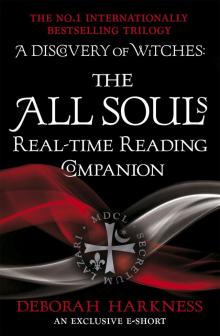 The All Souls Real-Time Reading Companion
The All Souls Real-Time Reading Companion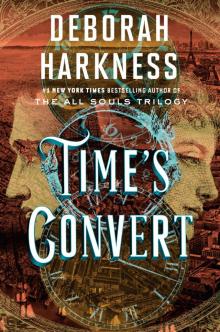 Time's Convert
Time's Convert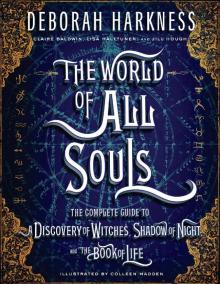 The World of All Souls
The World of All Souls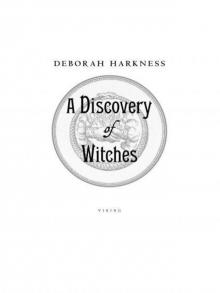 A Discovery of Witches: A Novel (All Souls Trilogy)
A Discovery of Witches: A Novel (All Souls Trilogy) Shadow of Night: A Novel
Shadow of Night: A Novel